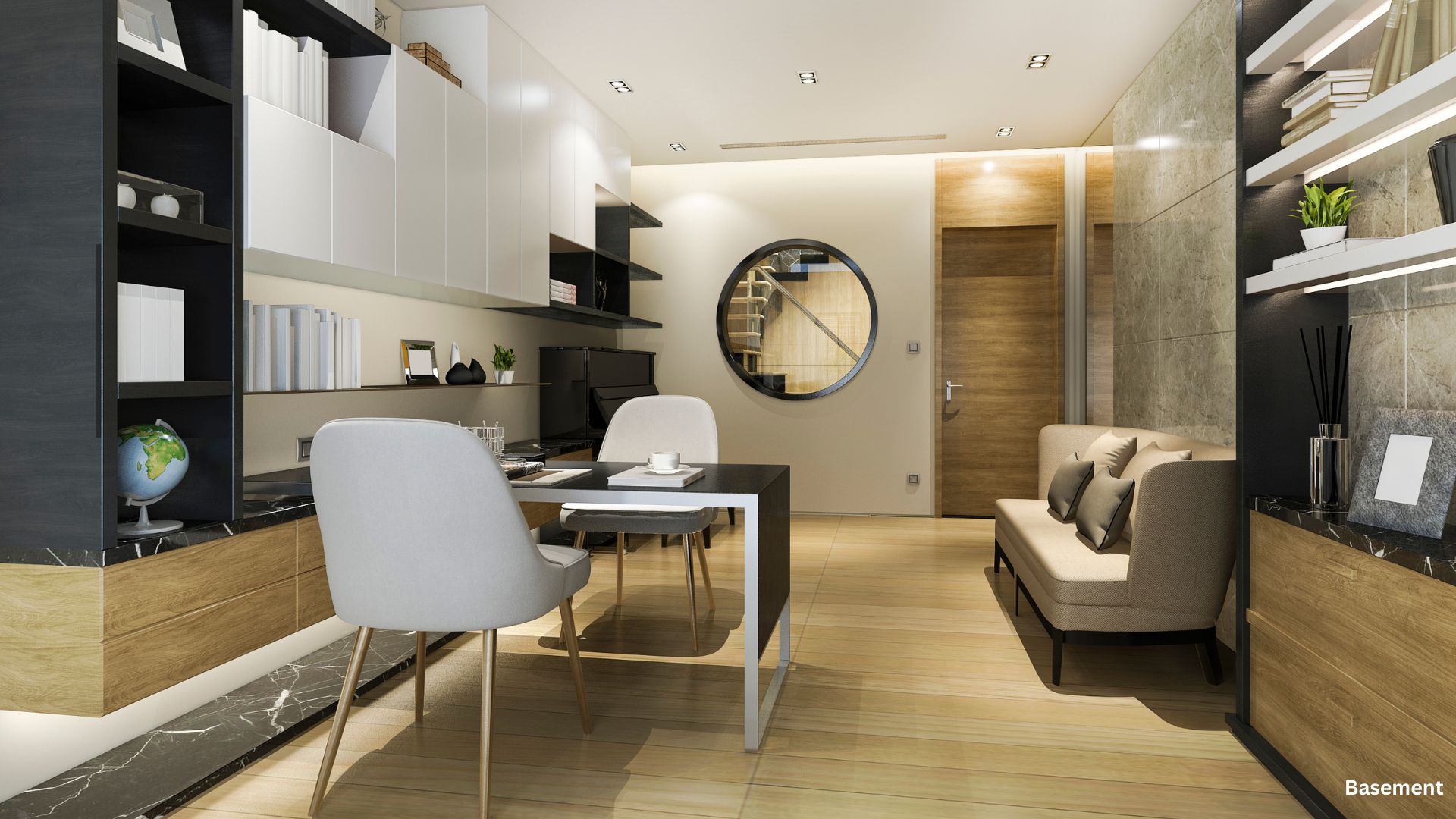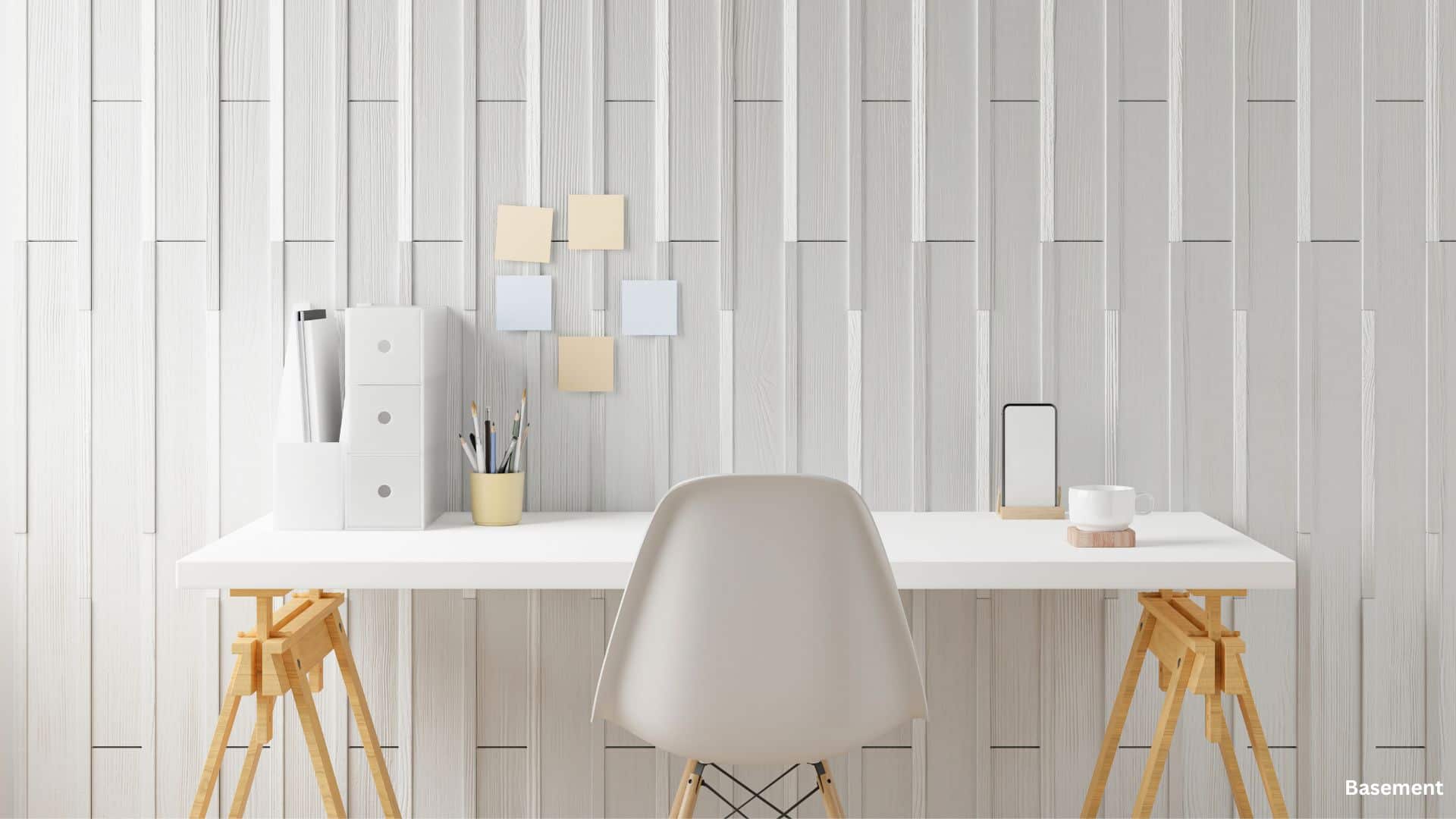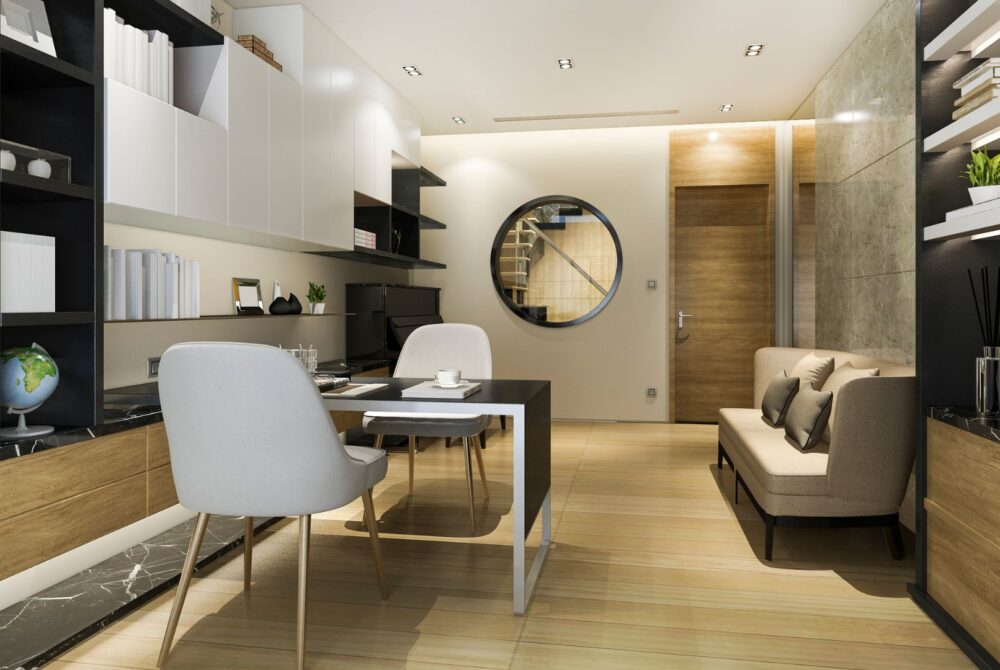Creating a basement home office can be a game-changer, providing a dedicated workspace away from household distractions. This article delves into the costs, design ideas, maintenance tips, and the pros and cons of setting up a basement home office. Additionally, we’ll address five frequently asked questions to help you make informed decisions.
Basement Home Office Ideas






Costs of Setting Up a Basement Home Office
The cost of transforming your basement into a home office varies based on factors such as size, existing condition, and the extent of renovations required. Here’s a breakdown of potential costs:
- Basic Renovation: $1,000 to $5,000. This includes painting, flooring, lighting, and basic furniture.
- Mid-Range Renovation: $5,000 to $15,000. This may include drywall installation, electrical upgrades, built-in furniture, and improved lighting.
- High-End Renovation: $15,000 to $30,000+. This covers extensive remodeling, high-quality finishes, custom furniture, and advanced technology integration.
Design Ideas for Your Basement Home Office
Designing a functional and aesthetically pleasing basement home office involves careful planning. Here are some design ideas to consider:
- Lighting: Basements typically lack natural light, so incorporating ample artificial lighting is crucial. Use a combination of overhead lights, task lights, and ambient lighting to create a bright and comfortable workspace.
- Furniture: Choose ergonomic furniture to enhance productivity and comfort. A sturdy desk, supportive chair, and adequate storage solutions are essential.
- Color Scheme: Opt for light colors to make the space feel larger and more inviting. Whites, pastels, and neutral tones work well for basement offices.
- Insulation: Proper insulation ensures a comfortable temperature year-round. Consider adding insulation to walls and floors to maintain a consistent climate.
- Acoustics: Soundproofing is important to minimize noise from the rest of the house. Use sound-absorbing materials such as carpets, acoustic panels, and heavy curtains.
Maintenance Tips for a Basement Home Office
Maintaining your basement home office ensures it remains a productive and pleasant environment. Follow these tips to keep it in top shape:
- Moisture Control: Basements are prone to dampness. Use a dehumidifier and ensure proper ventilation to prevent mold and mildew.
- Regular Cleaning: Keep the space clean and clutter-free to maintain a professional atmosphere.
- Check for Leaks: Regularly inspect the basement for any signs of leaks or water damage and address issues promptly.
- Pest Control: Basements can attract pests. Seal any cracks and use appropriate pest control measures to keep them at bay.
- HVAC Maintenance: Ensure your heating and cooling systems are functioning efficiently to maintain a comfortable temperature.
Pros and Cons of a Basement Home Office
| Pros | Description |
|---|---|
| Separation from Living Space | A basement office provides a distinct separation from the main living areas, reducing distractions. |
| Utilization of Unused Space | Converting a basement into an office makes productive use of otherwise unused space. |
| Potential for Customization | Basements offer a blank canvas for creating a personalized and unique workspace. |
| Increased Property Value | A well-designed basement office can enhance the value of your home. |

| Cons | Description |
|---|---|
| Potential Moisture Issues | Basements are susceptible to dampness and water damage, requiring additional moisture control measures. |
| Limited Natural Light | Lack of natural light can impact the overall ambiance and may require more artificial lighting solutions. |
| Accessibility Concerns | Basements may be less accessible, especially for those with mobility issues. |
| Higher Renovation Costs | Depending on the state of the basement, renovation costs can be substantial. |
Frequently Asked Questions
1. How much does it cost to build a basement home office?
The cost ranges from $1,000 to $30,000+, depending on the extent of renovations and quality of materials used.
2. How can I improve lighting in my basement office?
Use a combination of overhead lights, task lights, and ambient lighting. Consider adding mirrors to reflect light and brighten the space.
3. What are the best flooring options for a basement office?
Waterproof flooring options such as vinyl, tile, or sealed concrete are ideal for basement offices to prevent moisture damage.
4. How can I soundproof my basement office?
Use sound-absorbing materials like carpets, acoustic panels, and heavy curtains. Sealing gaps and adding insulation can also help.
5. What are some essential furniture items for a basement office?
An ergonomic desk and chair, adequate storage solutions, and good lighting are essential for a functional basement office.
Setting up a basement home office can transform your work-from-home experience, providing a dedicated and productive space. By considering costs, design ideas, maintenance tips, and the pros and cons, you can create an efficient and comfortable workspace tailored to your needs.
